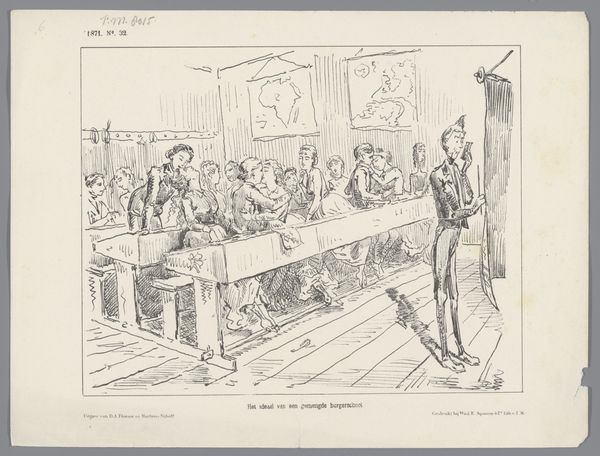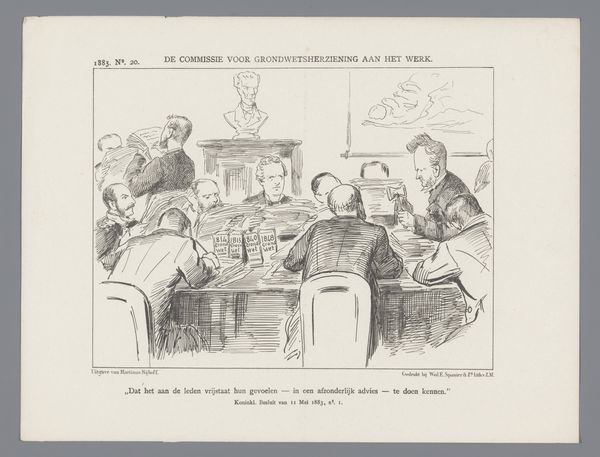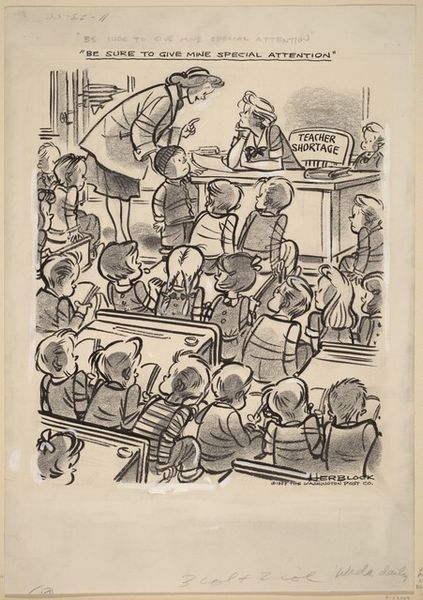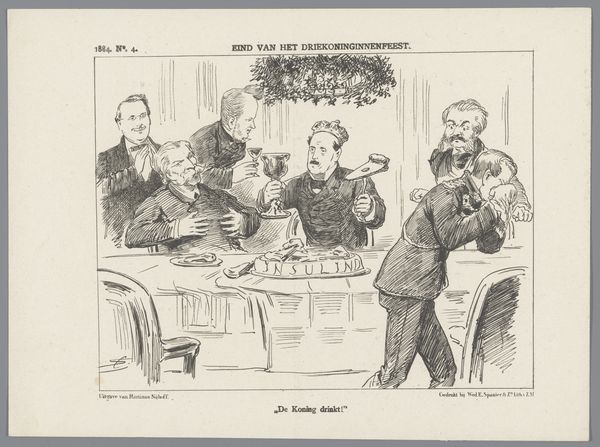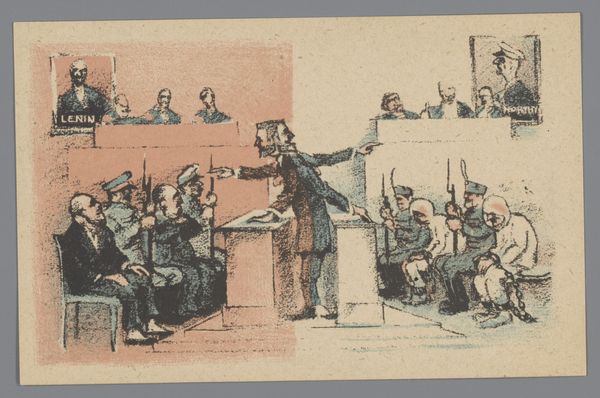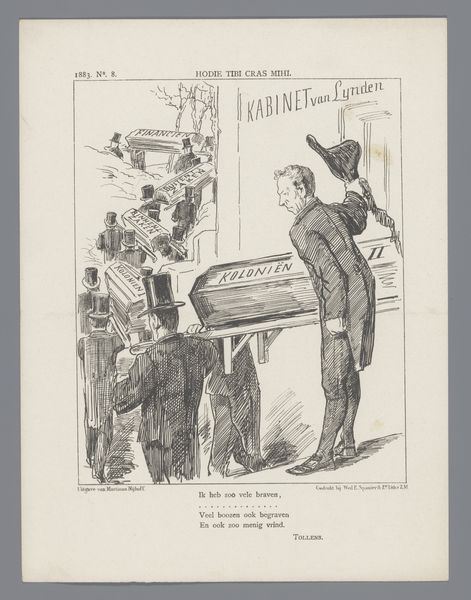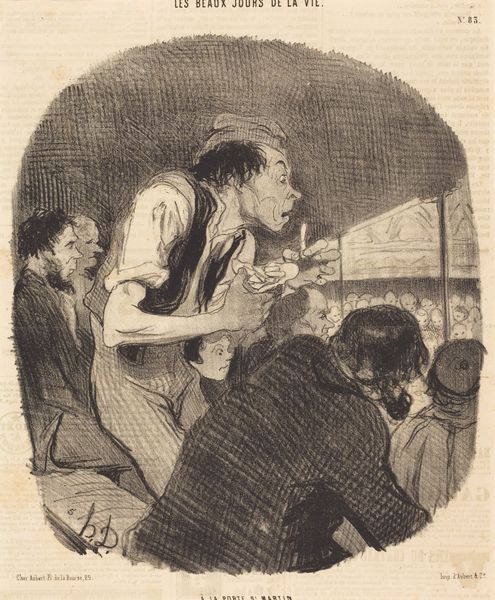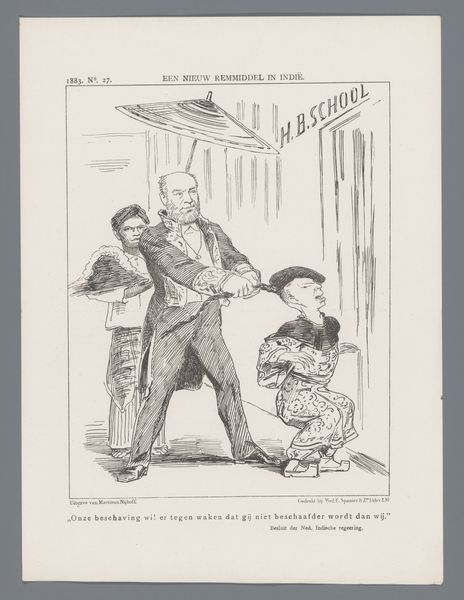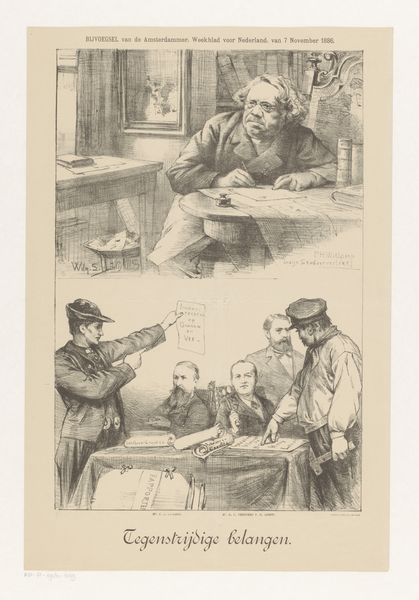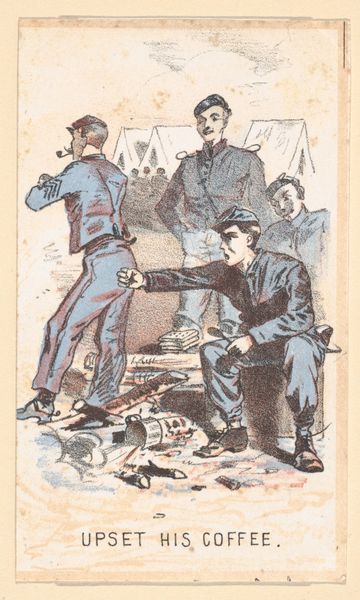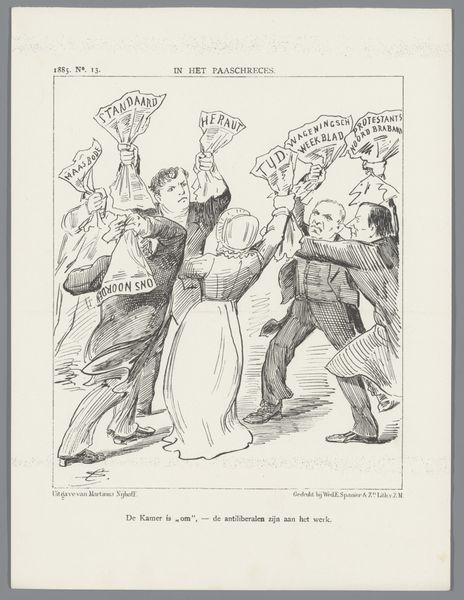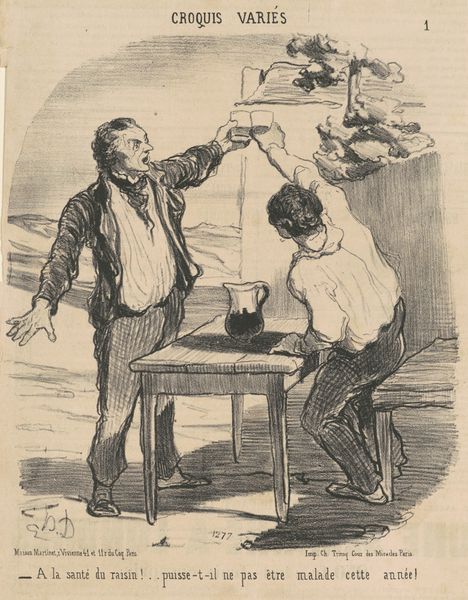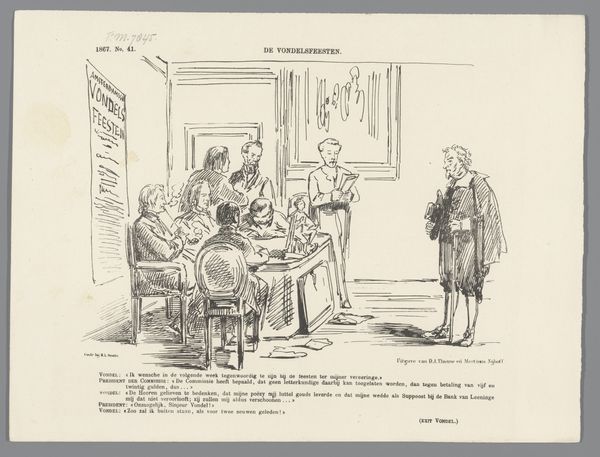
Copyright: Rijks Museum: Open Domain
Curator: This sketch by Otto Verhagen, titled "Omstanders bij een sinaasappelenverkoopster" – which translates to "Bystanders at an Orange Seller’s" – was made in 1919, and it’s a delicate piece executed in pencil on paper. Editor: It's captivating! It immediately strikes me as rather somber despite its bright subject. The faces have this… etched quality. A vulnerability conveyed through the drawing's rapid, almost frenzied lines. Curator: Precisely. Notice the material reality of urban life depicted: a street vendor surrounded by potential customers. Consider how Verhagen chooses pencil - a readily available and affordable medium - reflecting the accessibility of the scene itself. There's a clear democratizing element at play. The very act of sketching, so immediate and portable, speaks to capturing the ephemeral nature of street life, the day-to-day rituals of purchase and consumption. Editor: Yes, and placing it in the context of 1919, so shortly after the First World War, illuminates the image’s cultural significance. This unassuming street scene then becomes more poignant, depicting everyday survival and the quiet commerce in a recovering city. I wonder how this image was first received. Did it hang in galleries, or was it disseminated through printed media, reaching a wider public grappling with rebuilding society? Curator: The sketch format further connects this image to labor and process. Was it intended as a preparatory study for a larger piece? It leaves me pondering the intended audience, the means of distribution, the very labor of depicting this ordinary interaction within the city. Editor: Absolutely, the urban landscape and its inhabitants being visually consumed, mirroring the very oranges being sold. There's a certain voyeuristic quality created by Verhagen. The viewer is drawn into this tableau of consumerism and social interaction in a newly shaped post-war society. Curator: Ultimately, viewing Verhagen's piece through the lens of materiality allows us to see how something as mundane as a pencil sketch can provide insight into the forces that were shaping the social landscape. Editor: Indeed. "Bystanders at an Orange Seller's" provides a powerful social commentary—a glimpse into daily lives amid the tides of early 20th-century shifts. A single image becomes a prism through which we can analyze and see that complexity.
Comments
No comments
Be the first to comment and join the conversation on the ultimate creative platform.
